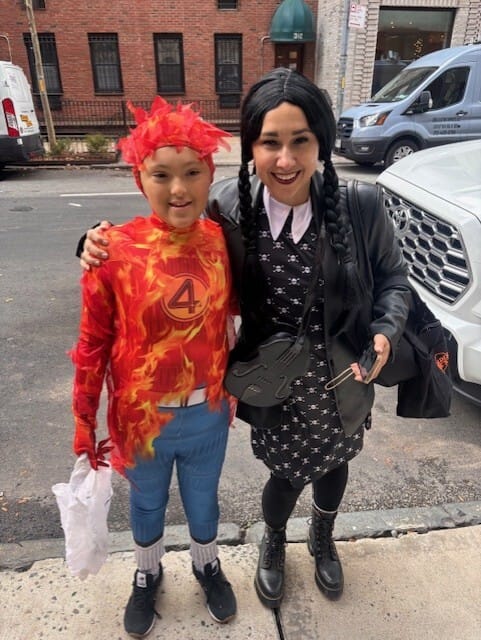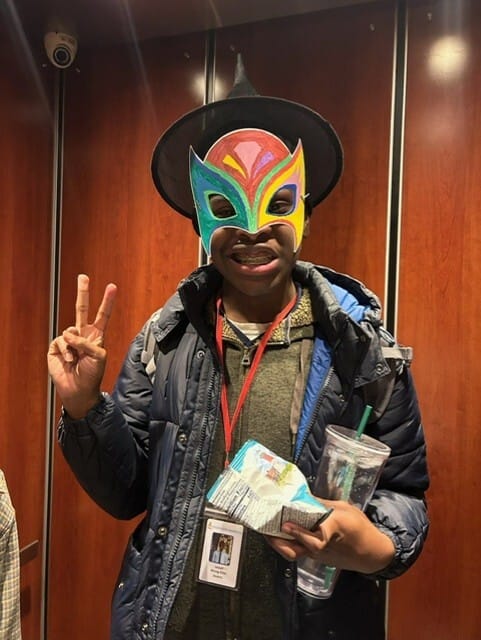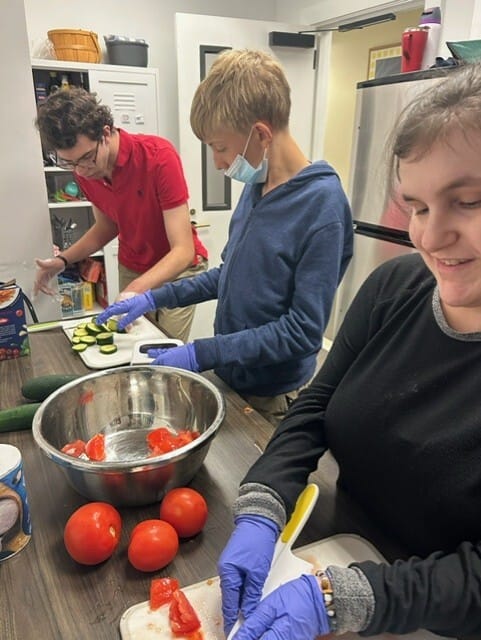- The CA Voice
- Posts
- Fall 2025: Patrolling for Progress
Fall 2025: Patrolling for Progress

A newsletter brought to you by the Speech Department at Children’s Academy
In this newsletter:
Fall 2025
Patrolling for Progress
October and November have been quite eventful at Children’s Academy! In October, students at both buildings had a visit from an NYPD officer. They were excited to ask questions and learn more about the job. Some of their questions included: “what is your favorite part of the job?” “do you like donuts?” and “when are you going to arrest [insert teacher’s name here]?” On Halloween, students showed off their costumes while parading down 50th St. in style! Many classrooms acknowledged New York’s recent mayoral race by having their own election day! Students voted for favorite animals, desired classroom activity, and favorite snacks. |  Thank you, Officer Dylan! |
 An experiment with the best reactions |  Piglet vibes |
 We love parents with Halloween spirit! |  Sensory exploration at our fingertips |
 Every vote counts! |  Masked and mysterious |

Lunch PALS in action!
SLP Spotlight: Kudos to all!
Inspired by the kudos box used among CA staff, middle/upper school SLPs recently introduced a kudos box for students! During social skills, students will now have time to practice giving compliments, inviting a friend to hang out, or sharing a personal message.

 |  |  |
Overheard at CA
 | “It’s almost Halloween, Thanksgiving, Hanukkah, and Christmas… chocolate coins and latkes too!” -Mary Mary is a middle schooler and gestalt language processer who perfectly captured the season’s chaos! |
Practice to Progress: Embrace bilingualism!
When a child with a language delay or difference is growing up in a bilingual household, it’s understandable for parents to question whether or not they should stick to one language, so as to not overwhelm the child. However, the research is reassuringly conclusive: bilingualism does not cause or worsen an existing language difficulty. Additionally, limiting your child to one language might make communication with family members more difficult. This means children with delayed language can be bilingual! They may just need more time, repetition, and consistent exposure. |  |
As with most language-related topics, the key is to focus on connection and understanding rather than perfection.
There are also some benefits to learning two languages, like strengthening attention, flexibility, and problem-solving. That’s in addition to all the other advantages like deepening connections with family members, building identity, and increasing the number of opportunities for meaningful connections.
Children may favor using one language over another, and that’s ok! It is great for them to have as many opportunities to express themselves as possible.
Here are some tips for supporting your bilingual child at home:
Speak the language you’re most comfortable with. Children learn best when adults speak naturally and warmly.
Keep using both languages through songs, stories, routines, and play.
Model and expand in either or both languages!
Encourage any attempt to communicate in any language.